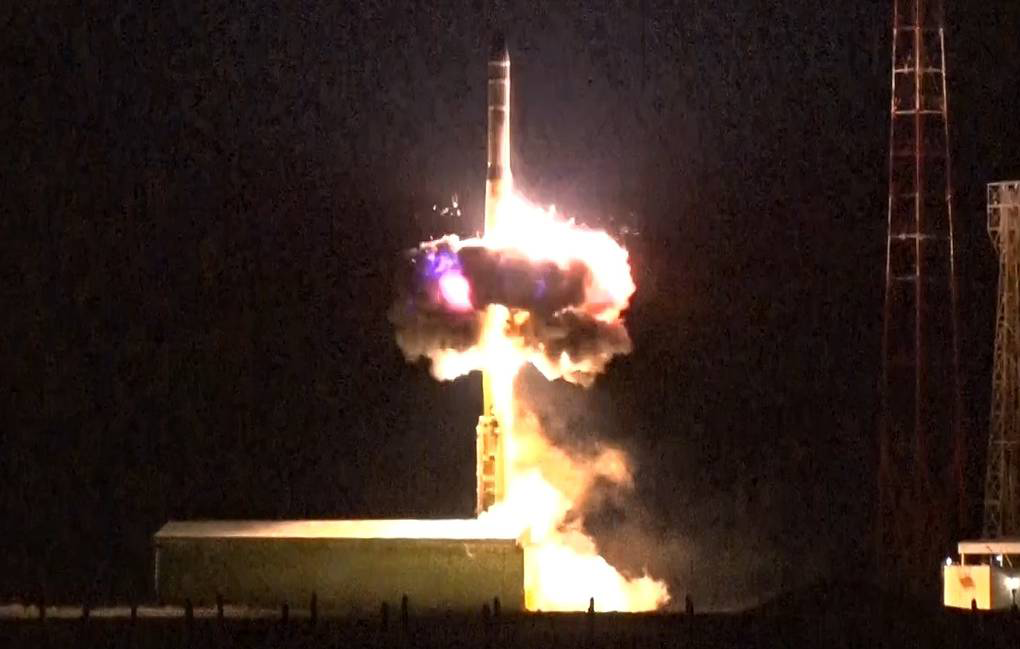“We continue to count on the valuable contributions of the Arms Control Association.”
An Early Test for the TPNW
May 2023
By Daryl G. Kimball
The 2017 Treaty on the Prohibition of Nuclear Weapons (TPNW) has changed the global debate on the advisability, legality, and morality of the continued possession and modernization of nuclear weapons for the better. Since the treaty entered into force in 2021, states-parties have reinforced the taboos against nuclear use and threats of use, particularly in connection with Russian threats of nuclear weapons use in its war on Ukraine.
 Nevertheless, nearly all of the world's nine nuclear-armed states continue to improve their nuclear arsenals, including by regularly conducting flight tests of missiles designed to deliver nuclear weapons to maintain existing nuclear weapons capabilities, develop new nuclear weapons systems, or simply demonstrate their capacity to annihilate their adversaries.
Nevertheless, nearly all of the world's nine nuclear-armed states continue to improve their nuclear arsenals, including by regularly conducting flight tests of missiles designed to deliver nuclear weapons to maintain existing nuclear weapons capabilities, develop new nuclear weapons systems, or simply demonstrate their capacity to annihilate their adversaries.
In the past month alone, the United States tested an unarmed Minuteman III intercontinental ballistic missile (ICBM) that landed in the U.S.-controlled test range near Kwajalein Atoll in the Marshall Islands, and France fired off an M51 sea-launched ballistic missile from its Le Terrible strategic submarine in the Atlantic Ocean.
Days earlier, the Russian Defense Ministry announced a test of a new nuclear-capable ICBM that was launched from Russia and landed in the Sary-Shagan test range in Kazakhstan on land leased to Russia through a long-term bilateral agreement.
The latest Russian ICBM test appears to be the first time Russia has used the Sary-Shagan site for a nuclear weapons-related missile flight test since the TPNW entered into force. According to the ministry, the missile’s training warhead hit a mock target to advance “development of new strategic missile systems.”
The test raises fundamental questions about how Kazakhstan, a leading TPNW proponent, interprets the treaty provisions and how other TPNW states interpret the treaty’s prohibition regarding “assistance” to other states’ nuclear weapons programs.
According to TPNW Article 1, each state-party undertakes “never under any circumstances to....[a]ssist, encourage or induce, in any way, anyone to engage in an activity prohibited” by the treaty, which bars development, testing, production, manufacturing, otherwise acquiring, possessing or stockpiling of “nuclear weapons or other nuclear explosive devices.”
But in response to Russia’s test, the Kazakh government has claimed that “the treaty bans only testing of nuclear weapons (nuclear explosive devices), but not missiles.” Kazakh officials say that the TPNW would need to contain an explicit prohibition on delivery systems for this to be a breach. They note that no nuclear weapons or nuclear explosive devices are being placed, tested, or utilized in any way on the territory of Kazakhstan and therefore “Kazakhstan remains in full compliance with its obligations under the TPNW.”
Although the treaty does not explicitly prohibit assistance with the development and testing of missiles designed to deliver weapons, it prohibits assistance with the development of “nuclear weapons,” and missiles designed to deliver nuclear warheads are part of a nuclear weapons system. A plain reading of the treaty and its negotiating history strongly suggests that facilitating tests of missiles designed to deliver nuclear bombs is inconsistent with the object and purpose, if not also the letter, of the treaty.
Kazakhstan is, without question, a strong proponent of a world free of nuclear weapons. After the Soviet Union collapsed, it inherited and later relinquished more than 1,000 nuclear weapons and forced a halt to Russian nuclear testing. Kazakhstan later helped establish the Central Asian Nuclear-Weapon-Free Zone Treaty. Even so, Kazakhstan must find a way to co-exist with its nuclear-armed neighbor Russia, which dominates Belarus and invaded Ukraine.
As a disarmament leader and chair-designate for the 2024 meeting of TPNW states-parties, Kazakhstan has a responsibility and an opportunity to seek adjustments to the 2015 bilateral lease agreement that governs Russia's use of the Sary-Shagan missile test range to ensure that it is not assisting Russia’s nuclear modernization program and its policy of nuclear intimidation in any way.
Noting that Russia has a missile test range in its own northern territory, Kazakhstan could propose, under article XXV of the lease agreement, that Sary-Shagan shall not be used as a test range to flight-test missile systems designed to carry nuclear weapons. The agreement, which lasts until 2025, allows for changes with the consent of both parties. It also specifies that the agreement will be suspended if the parties do not reach a mutual decision on lease terms.
Russia’s ICBM test at Sary-Shagan will be a topic at the meeting of TPNW states-parties in November. With little time to meet and a full agenda, TPNW states should create a working group to evaluate what types of “assistance” for nuclear weapons-related activities are prohibited and, perhaps most importantly, what actions would best support the goals of the TPNW.
Although the situation is challenging, it is vital that TPNW member states make it clear that they do not support activities that enable nuclear weapons modernization and arms racing, especially in this period of growing nuclear risk.
